Luke Prokop: On Coming Out and Living Your Truth
chatted with Luke Prokop, Canadian ice hockey professional, on coming out as the first gay player signed to the NHL.

How does it feel to be the first hockey player signed to the NHL to come out as gay?
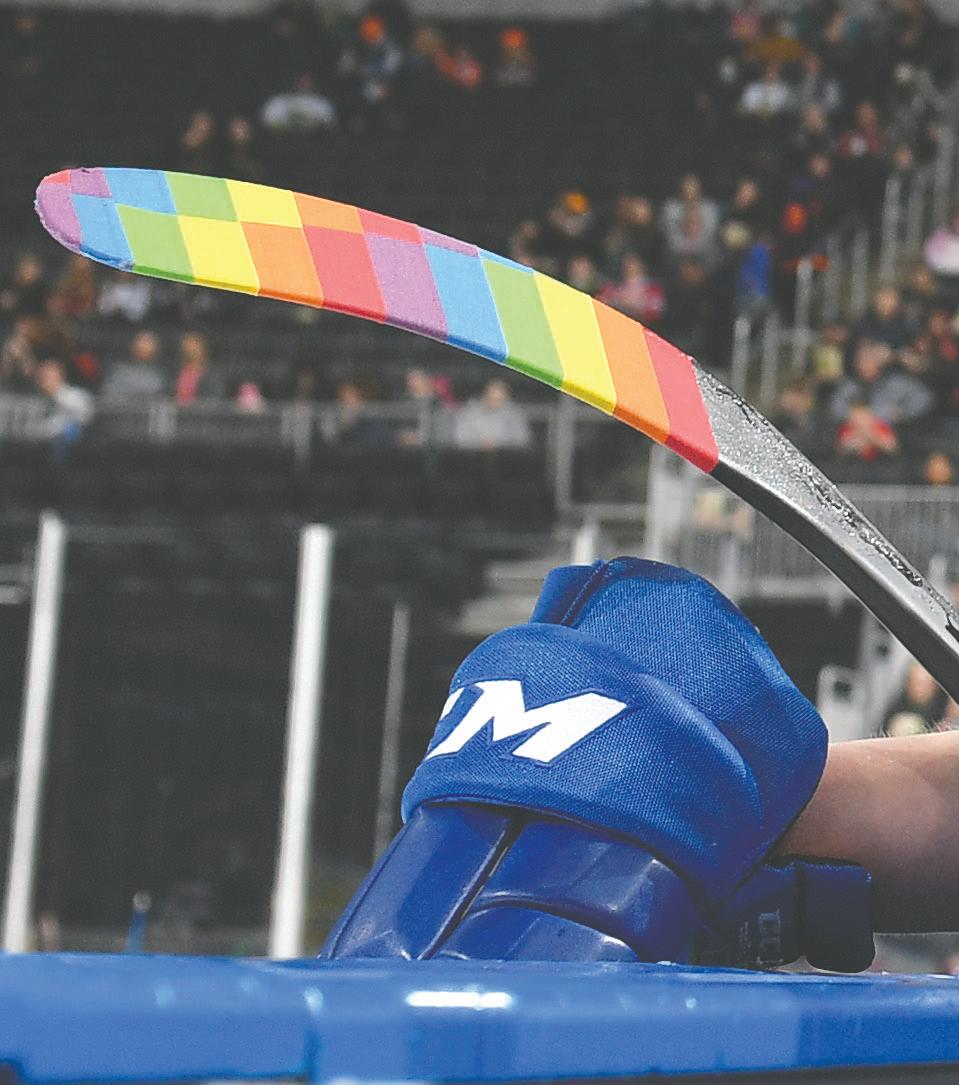

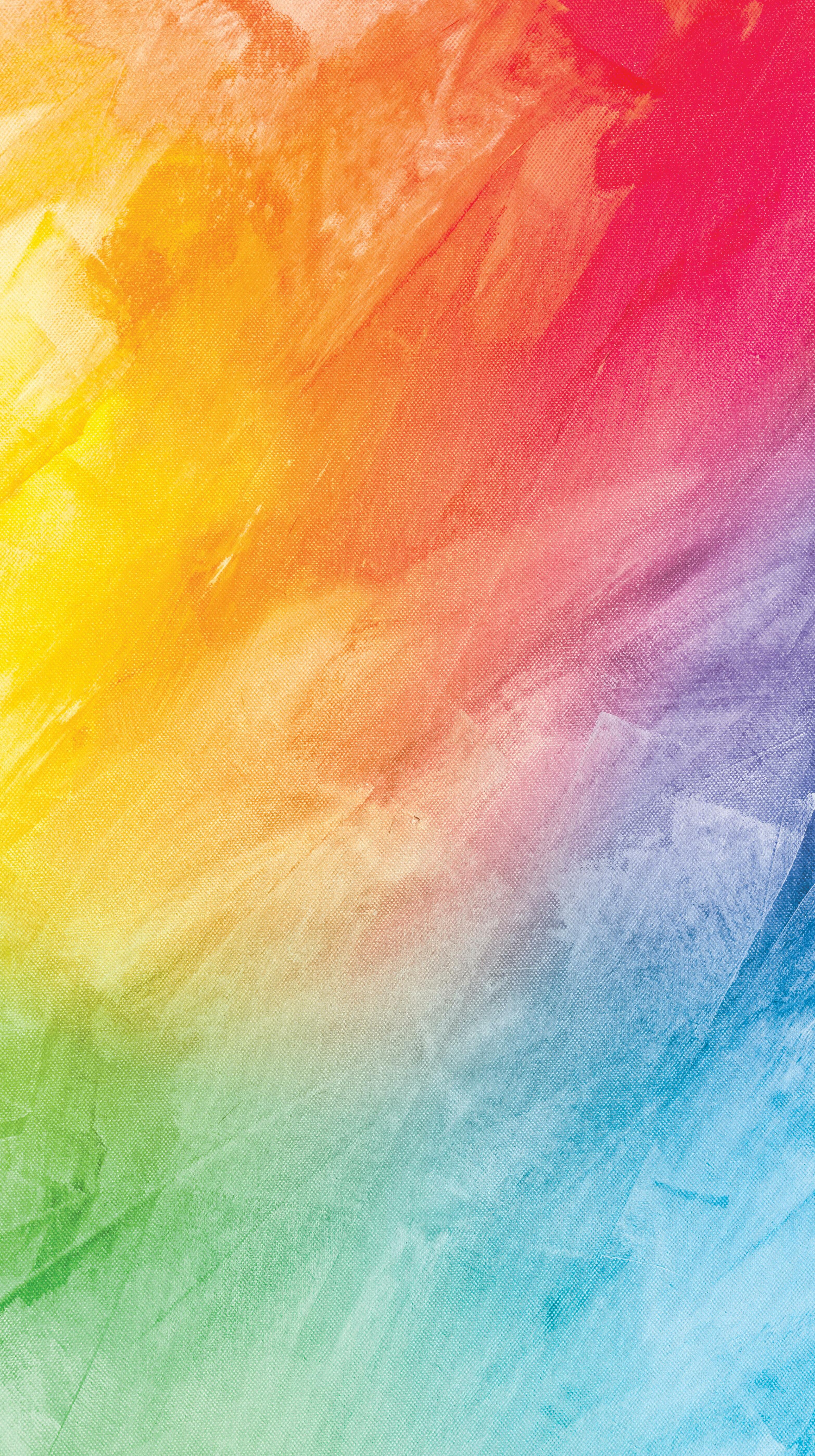
It’s a little shocking to think hockey has been around for so long and that there’s no one else who has come out. It would’ve been nice to have a role model to look up to when I was a kid watching hockey and questioning my sexuality. But it comes with a lot of pressure. People ask me how I deal with it, and I think it’s just my personality — it’s who I am. I’ve always wanted to help people in any way I can, even if it’s just responding to a message on social media.
What gave you the courage to live your truth and share it with the world?
During the pandemic and once my season finished, it gave me a lot of time to discover who I was. I knew I was gay my whole life, but I never really

understood what it meant until I was around 14 or 15. I came out to my family first, and they were amazing and super supportive. I later sat down with my agents in June 2020, and they were super supportive as well, and supported any decision I made.
During my bubble season in Calgary, it felt like something was bothering me my whole time there. A few days after I came home from Calgary, I sat down with my agent and finally decided I wanted to come out publicly.

I was okay with stepping away from the game if it didn’t accept or support me, which made me realize it was the right time to share this publicly.



What are some ways you think organizations can better support their athletes to be their authentic selves?
I think continuing to have these types of conversations, even in the dressing
room, whether team-mandated or not, is important. For the most part, I feel like my generation is very receptive, and they don’t care what race you are, what your sexual orientation is, and what your beliefs are. At the end of the day, they’re your teammates and brothers who all have a common goal: winning a championship.
What is one piece of advice you would give to athletes wanting to come out?
I would tell people to take their time. Everyone is different, and not everyone has the same story, background, or support system that I gratefully have. I told my sister in April 2020 and my friends in January 2021, so it took me some time and courage to share it with the most important people in my life. One message I want to continue to share is how positive my support and reactions were after I publicly came out.
Content & Web Editor:
All images are from Getty Images unless otherwise credited. This section was
by
editorial departments. Send all inquiries to ca.editorial@mediaplanet.com @MediaplanetCA Please recycle facebook.com/TrueNorthLivingCA/ Read more at truenorthliving.ca A SPECIAL INTEREST SECTION BY MEDIAPLANET
Publisher: Santana Symeonides Director of Business Development: Julia Colavecchia Country Manager Nina Theodorlis Content & Production Manager: Raymond Fan Designer: Giuliana Bandiera
Karthik Talwar
created
Mediaplanet and did not involve the Toronto Star or its
Follow Luke's journey on his instagram @lukeprokop_
PHOTO COURTESY OF ANDY DEVLIN
Mediaplanet
Read more about the Pride and Empowerment campaign on truenorthliving.ca
Q&A WITH
Lifeline: Celebrating the Wins While Pushing for Better
For over forty years, the Canadian Federation of Students has connected community builders, student organizers, and grassroots activists around issues that matter the most to students — from calls for free, high-quality, and accessible tuition to building a culture of consent on campuses, and the fight for international students’ and Indigenous learners’ rights. This Pride Month, we’re taking a measured look at Canada’s new blood donation policy and what changes it has in store for the queer and trans communities.
Every minute of every day, someone in Canada depends on life-saving blood. Unfortunately, blood donation has taken an enormous hit amidst the COVID-19 pandemic, prompting countries around the world to pass new legislation for more inclusive and diverse blood supplies. In April 2022, Canada followed suit, announcing a revision to its blood donor screening policy. This new change attempts to take sexual orientation out of the equation and instead focuses on high-risk sexual behaviour.
tweet from former student activist Shannon Salisbury, she recalled her time as a Carleton University student in 1996, where she led an on-campus protest against the blood donation ban. Many years later, Carleton students continue to debate on the issue, with a student association vote in 2012 to uphold the ban on blood clinics on campus that forbid gay men from donating.
In 2015, the newly elected Liberal Government expressed its commitment to finally ending this practice. The same year, the Canadian Federation of Students coordinated consultations with Canadian Blood Services to discuss the shortcomings of the screening procedure, stating that it should be based on behaviours that are scientifically proven to be high-risk for transmitting blood-borne pathogens and not on stereotypes of queer and trans people.
Seven years, $5 million, and countless studies later, beginning September 30, 2022, the new policy will introduce a “sexual behaviour-based donor-screening questionnaire that will apply to all blood and plasma donors.” If an individual’s behaviour is flagged as high-risk, they will be subjected to a three-month deferral period where they must refrain from such behaviour before being allowed to donate.
again falls short. Dr. OmiSoore Dryden, blood donation expert and James R. Johnston, Chair in Black Canadian Studies in the Faculty of Medicine at Dalhousie University, agrees that the announcement is long overdue.
A history of resistance
Due to growing fears at the height of the HIV/AIDS epidemic in 1992, Canadian Blood Services (CBS, then the Canadian Red Cross) mandated a lifetime ban on blood donations from men who have sex with men (MSM), which also disproportionately impacted the Two-Spirit and trans communities. This continued until 2013, at which point the ban shifted to deferral periods, which have since changed in length.
Throughout this period, students have played a significant role in advocating for queer issues in Canada. In a


In a statement from the Gay Men’s Sexual Health Alliance, the organization calls attention to the “inherent bias” in the questionnaire. While the new policy does not explicitly forbid gay or bisexual sex, sex acts typically linked to gay, bisexual, Two-Spirit, and trans folks are still categorized as highrisk behaviour.
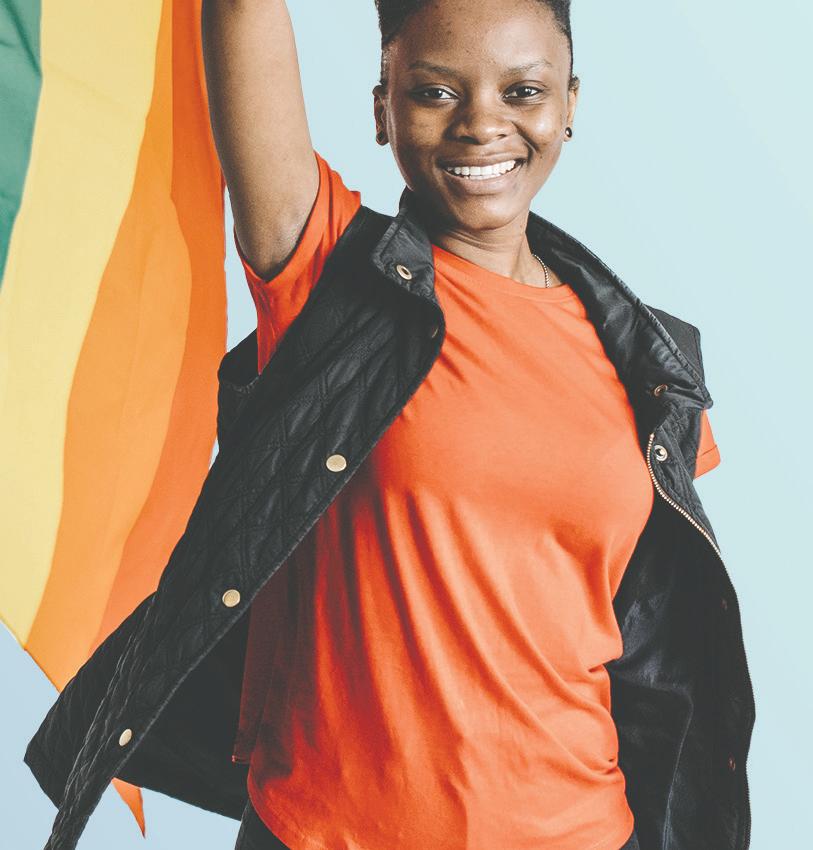
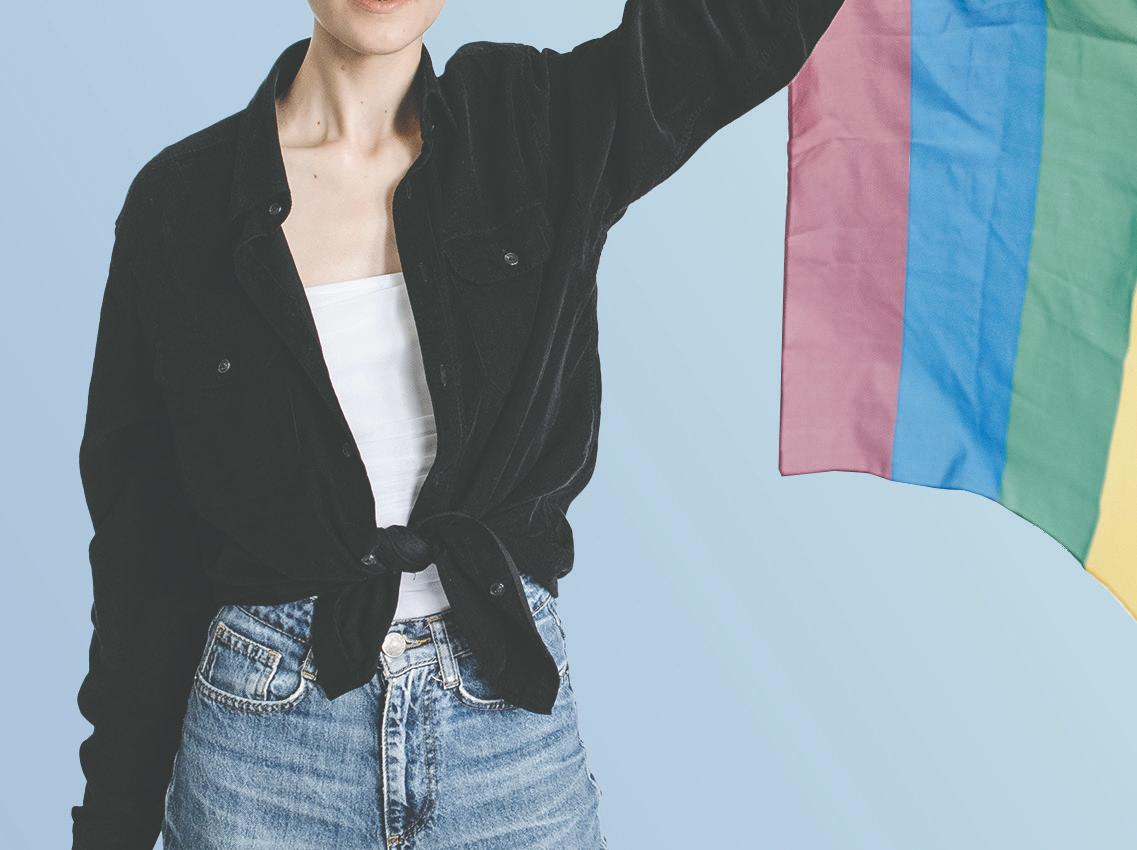
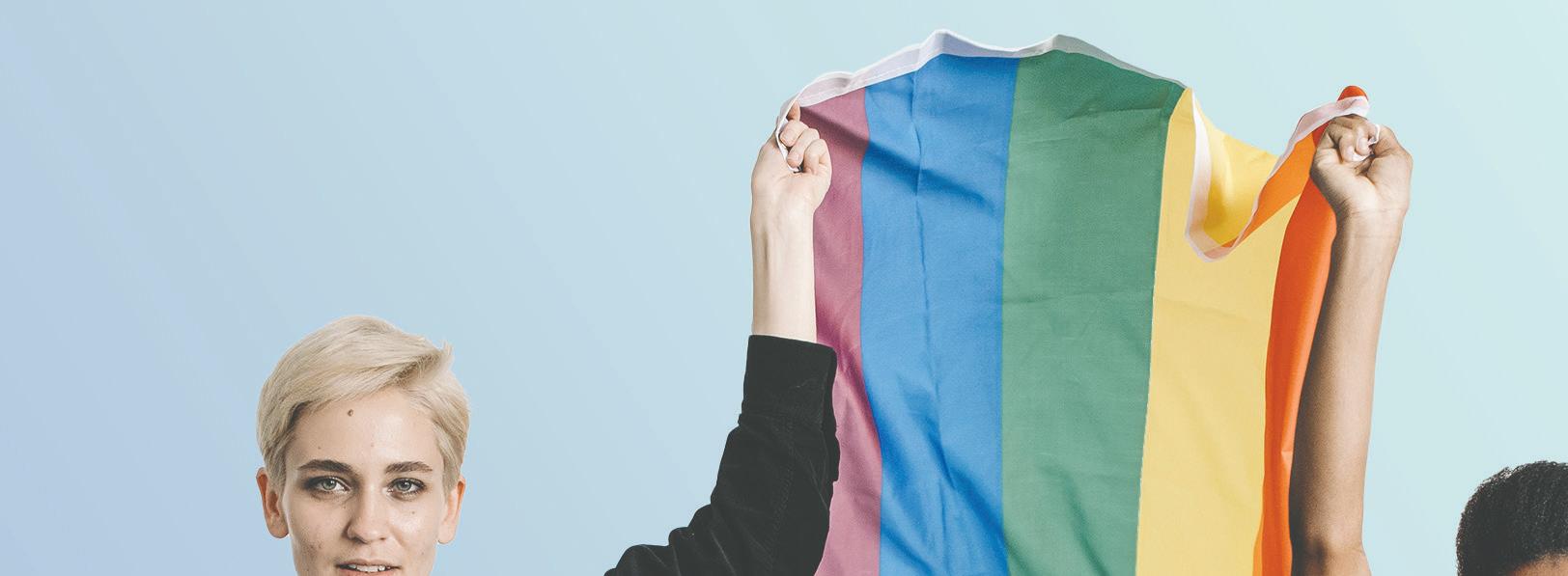
For racialized and underrepresented groups, the new policy once
Pride Month is about joy and resistance We must celebrate small victories with continued organizing and recognition for the movements that got us here. In a statement from the All Blood is Equal Coalition, the campaign pointed to the work of “Activists, 2SLGBTQ+ organizations, students’ unions and labour unions [who] have long advocated an end to this discriminatory ban.”
Echoing the call from 2SLGBTQ+ activists and organizations for CBS to forefront safe sex practices in its screening policy, the Canadian Federation of Students also calls on CBS to coordinate diverse community consultations of those who have been historically barred from donating blood.
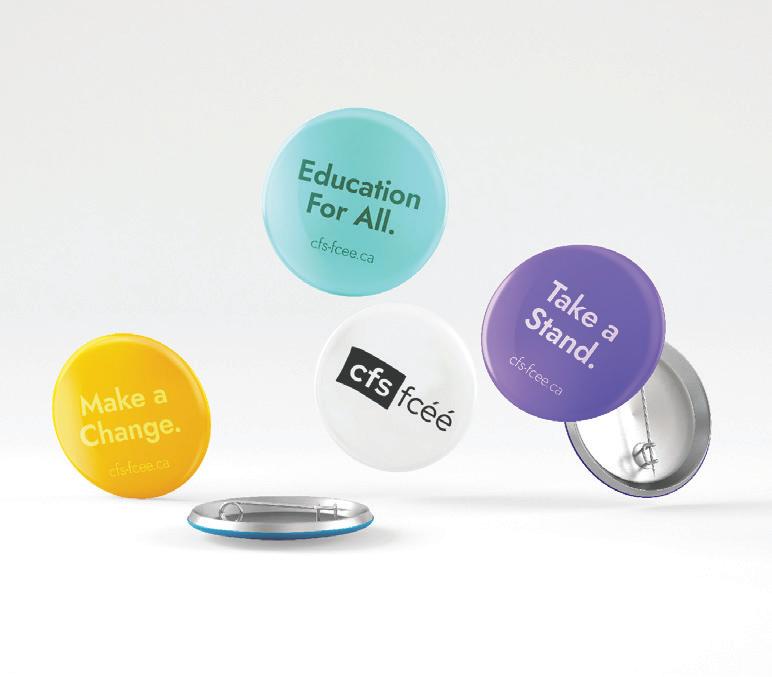
With these changes, Canada’s blood system will be safer, more responsive to potential infections, and draw on a larger pool of donors. And with many students back to in-person classes, they’ll once again have the opportunity to donate to campus blood donation labs. Because really — strengthening Canada’s lifeline shouldn’t be this hard.

2 | Read more at truenorthliving.ca A SPECIAL INTEREST SECTION BY MEDIAPLANET
What does this mean for queer communities?
Strengthening Canada’s
Canadian Federation of Students
Every minute
every day, someone
saving
This Pride Month, we’re taking a measured look at Canada’s new blood donation policy and what changes it has in store for the queer and trans communities.
of
in Canada depends on life-
blood.
Visit cfs-fcee.ca to learn more about the Canadian Federation of Students’ 40+ years of student advocacy.
This article was sponsored by Canadian Federation of Students
Full of Pride: A Space Where Everyone Belongs at George Brown
For post-secondary students in the 2SLGBTQ+ community, finding a school that promotes inclusivity and diversity can be a top concern when deciding where to study.
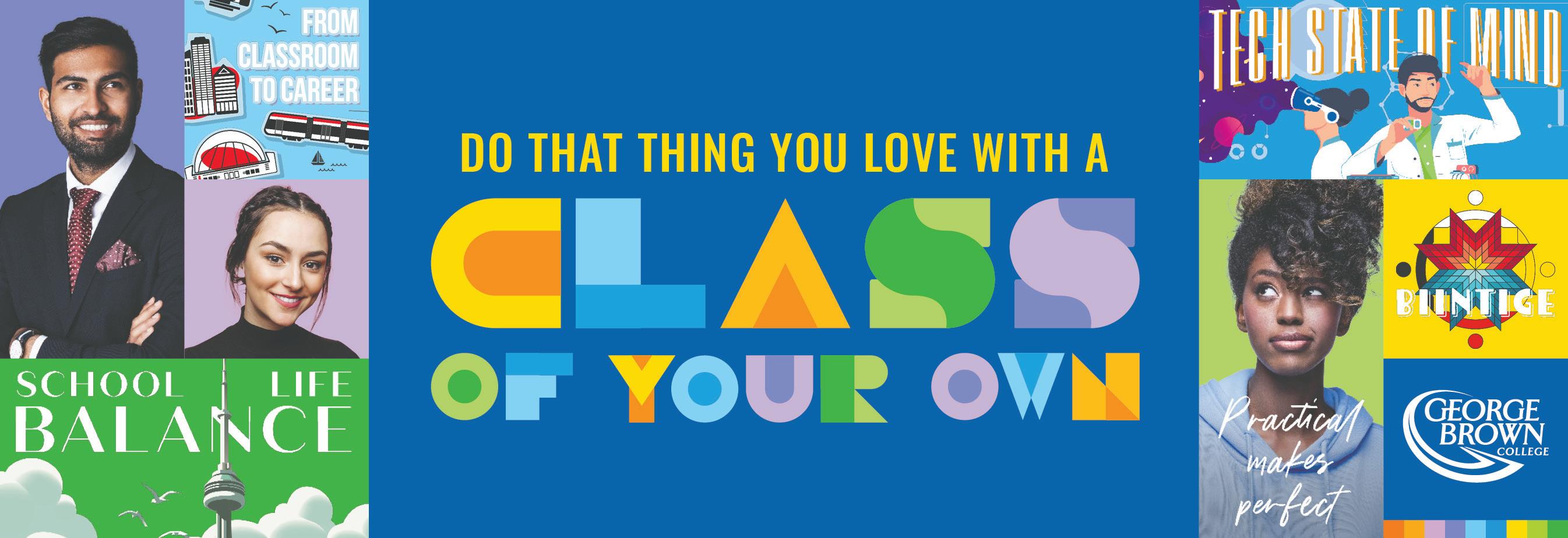
Fortunately, George Brown College (GBC) provides a space that fits the bill. With Pride Month in full swing, the college is embracing the opportunity to highlight its commitment to creating a learning and working environment where students and employees feel safe and accepted, regardless of sexual orientation or gender identity.
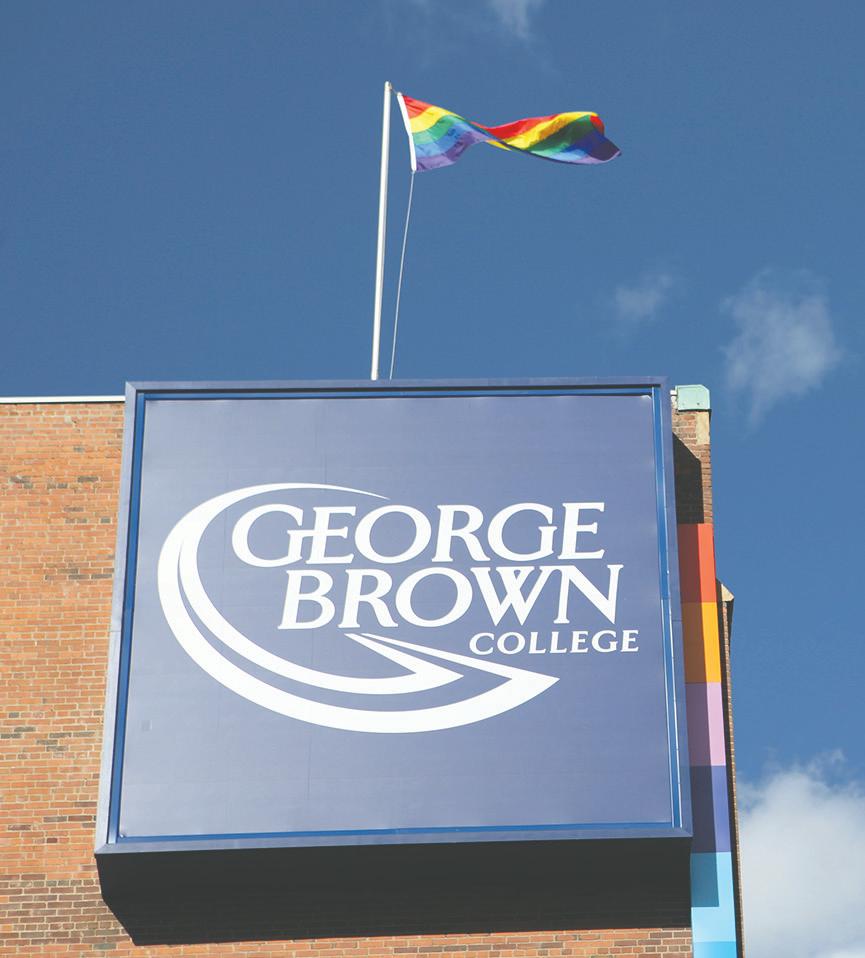
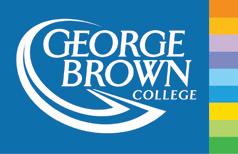
A spirited kick-off to Pride 2022 George Brown began its Pride Month festivities on June 1, with its annual raising of the Pride flag, followed by a celebration with the school’s community. Hosted by GBC graduate Samantha Bitty, the event included live music and performances by accomplished artists from Toronto’s 2SLGBTQ+ community.
As he addressed the crowd gathered at the flag raising ceremony, Dr. Gervan Fearon, President of George Brown College, said, “We all stand together in celebration of Pride Month while recognizing that the spirit of Pride must be embedded in our actions, as well as our activities all year-round.”
River King, a current GBC student,
never felt like I was queer enough or trans enough,” they say. “There’s a lot of representation along the gender spectrum within the George Brown faculty, and they went above and beyond to make me feel comfortable.”
Month to be an important celebration not only for our entire city but for our student, employee, and alumni community.”
While taking stock of the many strides GBC has made to support 2SLGBTQ+ initiatives, Herrera is hesitant to get complacent with their achievements. “We have so much to celebrate for Pride this year,” he says, “but there’s still much more work to be done.”
Inspiring social change through art and activism
John Caffery, a graduate of George Brown College and current professor in the college’s Community Worker Program, has a long history of engaging youth in social change and inspiring creative responses to oppression. Caffery’s Hall of Justice poster project seeks to raise awareness of 2SLGBTQ+ activism by featuring prominent activists from the community, including bell hooks, Vivek Shraya, and George Takei.
The college’s Office of Anti-Racism, Equity and Human Rights Services (OAREHRS) has a slate of events planned for the remainder of Pride Month, including employee training around terminology, concepts, and anti-oppression principles, and a yoga class organized by the Black Student Success Network (BSSN) for Black 2SLGBTQ+ students and Black student allies.
A stitch in the fabric of Toronto Referring to himself as “out and proud,” Michael Herrera, Chief Financial Officer at George Brown College, feels honoured to hold a senior leadership role at an institution that stands behind its 2SLGBTQ+ students and employees.
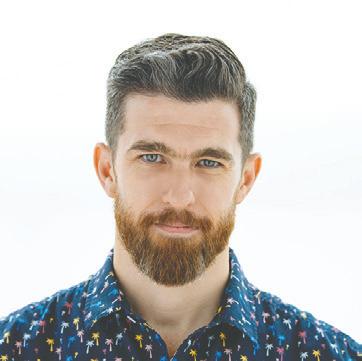
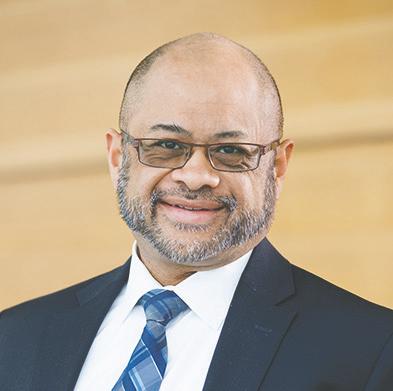
Upon learning of the lack of francophone 2SLGBTQ+ resources in Ontario, Caffery secured funding through George Brown’s Ignite Fund to have the existing posters translated to French while adding more activists to the project.
“Students need to see their identities reflected on the walls of the places they frequent,” says Caffery, noting that schools are often the site of homophobic, biphobic, and transphobic violence. “The posters symbolize that 2SLGBTQ+ communities belong at George Brown College.”
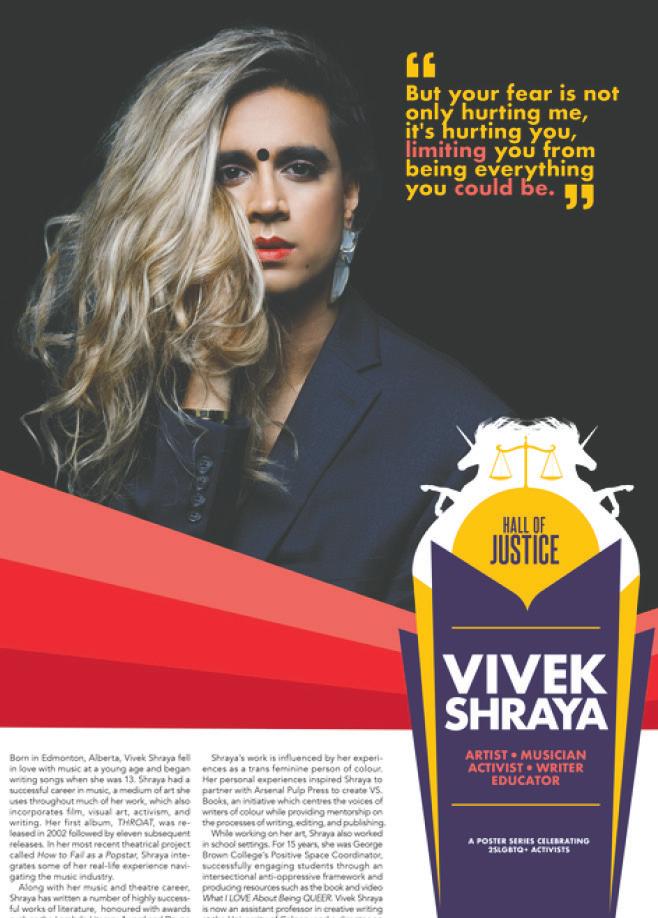
praises the school for its culture of acceptance. “For a long time, throughout my transition and coming out, I
Born and raised in Toronto, Herrera notes the significance of Pride to the college, with its inextricable link to the city it calls home. “George Brown is deeply rooted in the fabric of Toronto,” says Herrera, “and we consider Pride
A joint collaboration between Caffery and his students, Caffery plans to continue growing Hall of Justice through partnering with community groups and adding more 2SLGBTQ+ activists to the series. “I think it’s inspirational to learn about how members of our communities have resisted injustice and thrived in the face of oppression,” he says.
Visit george brown.ca/ pride to learn more.
Michael Herrera Chief Financial Officer, George Brown College
John Caffery Professor & Activist, George Brown College
A SPECIAL INTEREST SECTION BY MEDIAPLANET Read more at truenorthliving.ca | 3
There’s a lot of representation along the gender spectrum within the George Brown faculty, and they went above and beyond to make me feel comfortable.
With Pride Month in full swing, learn how George Brown creates an environment where students and employees feel safe and accepted.
Stephanie Gilman
This article was sponsored by George Brown College
Vivek Shraya: Hall of Justice Winner
HQ: Supporting Toronto’s 2SLGBTQ+ Community with a Holistic Approach to Health
There’s a defi nite connection between our sexual, mental, and physical health — especially so for queer folks, marginalized communities, and those with intersecting identities, which leads to more complex needs for services — but you wouldn’t know it by looking at the scattered distribution of Toronto’s health care services. Sexual, mental, and physical health are typically viewed in an isolated manner and services are provided separately. This approach creates gaps, barriers, and suboptimal outcomes.
Fortunately, a transformational new health centre that evolved through sector partnerships to fill this recognized gap is coming soon to downtown Toronto to provide a more holistic approach to sexual and mental health care.
Why holistic care is needed Toronto has excellent mental and sexual health services, but they exist independently. This can present challenges for service users, including queer and transgender folk, newcomers to Canada, and others who experience barriers to care or have complex, intersecting needs. Studies show, for example, that cisgender gay, bisexual, and queer guys as well as transgender people experience higher rates of mental health issues and substance use challenges such as depression, anxiety, PTSD, suicidality, and self-harm. In addition, stigma, homophobia, transphobia, and social isolation often create additional barriers to care — not to mention the challenging logistics involved in visiting multiple care providers.
Also, despite being Canada’s most populous city and home to the country’s largest population of gay, bi, and queer guys, as well as to a vibrant trans and non-binary community, Toronto is one of the only major cities in North America without a centre of excellence dedicated to providing integrated health services to empower this population.
An integrated approach is needed that erases barriers to care, empowering service users with comprehensive programs that promote their physical, sexual, mental, social, and spiritual well-being all at once.
The struggles of fragmented care Asya, a transgender woman originally from Turkey, is an example of one of the Toronto residents who would benefit from a more integrated approach to sexual, mental, and physical health care services. “When I arrived in Toronto, I started therapy,” she says. “I came to terms with my true identity

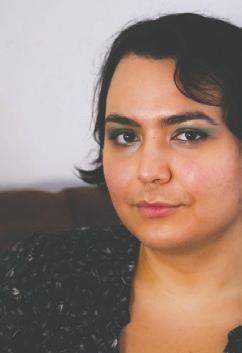
and started transitioning.”
Despite the availability of sexual health and mental health services in the city, Asya was frustrated with the fragmented care. “Mental health services need to be integrated with sexual health services because anxiety, worry, or depression often come with talking about sexual health,” she says. “Going around the city to separate places for different services is exhausting. The other challenge is the fear of discrimination.”
blood-borne infections testing and treatment, and a clinic offering preand post-exposure prophylaxes for HIV), mental health assessments, in-person counselling and referrals, physical health services, social and wellness programs (and spiritual offerings, including a room specifically designed for Indigenous smudging ceremonies), community space, and referrals to primary care, all with walk-in availability in a discreet, welcoming space.
Working together to create change
HQ Toronto came about through the collaboration of many partners, including community clinicians with competence in serving cisgender guys into guys and transgender and non-binary people, alongside well-established AIDS Service Organizations (ASOs) and other organizations that offer social support and health services to Toronto’s Black, Asian, Indigenous, Latinx, and francophone communities.
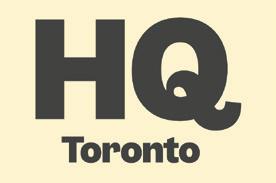
The solution for integrated care HQ Toronto at 790 Bay St, centrally located in downtown Toronto and officially launching later this summer, will provide multifaceted support to cisgender guys who are into guys and all transgender and non-binary people. HQ will be a safe, accessible, and welcoming space servicing diverse users regardless of age, race, ethnicity, gender identity, sexual orientation, HIV status, socioeconomic status, immigration status, or ability. Services will be provided in multiple languages and administered by staff that reflect the diversity of the community. HQ will reduce barriers for people like Asya and offer integrated, person-centred holistic health care services.
“Decades of research tell us that sexual health, mental health, and substance use are all interconnected,” says Tim Guimond, Director of Mental Health at HQ Toronto. “Guys who are using methamphetamine face higher rates of contracting HIV, and depression and post-traumatic stress disorder are also linked with higher rates of other sexually transmitted infections. However, for many years the services for these issues have been offered separately. We believe by joining together as medical and mental health professionals, we’ll be able to share our knowledge and ultimately be able to better serve people.”
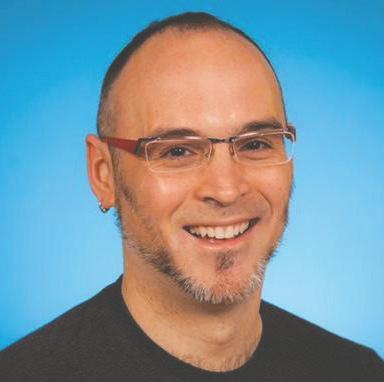
Services at HQ will include sexual health services (including express HIV and sexually-transmitted and
“With HQ, it was really important that this centre remains relevant for all people who are non-English speaking and non-white,” says Praney Anand, Executive Director at Alliance for South Asian AIDS Prevention (ASAAP). “There’s a significant and growing population of racialized queer people in Toronto. We worked to ensure that HQ doesn’t forget the minority communities and the intersections of identities.”
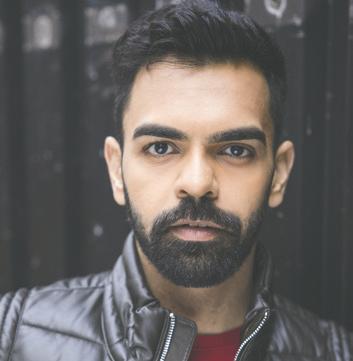
“Guys into guys remain disproportionally affected by HIV in Toronto,” says Garfield Durrant, Men’s Prevention Specialist at Black Coalition for AIDS Prevention (Black C.A.P.), Canada’s largest Black-specific AIDS service organization. “With the creation of HQ Toronto, we’ve been working to create the building blocks for a more coordinated and systematic response to these men’s sexual health needs.”

Through its collaboration and commitment to offering integrated care, HQ Toronto is redefi ning the status quo.
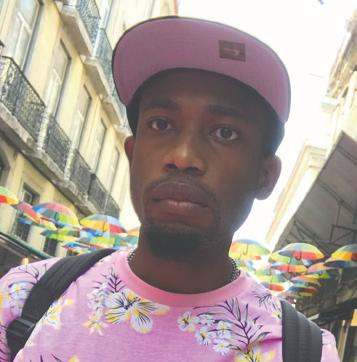
4 | Read more at truenorthliving.ca A SPECIAL INTEREST SECTION BY MEDIAPLANET
We believe by joining together as medical and mental health professionals, we’ll be able to share our knowledge and ultimately be able to better serve people.
Decades of research tell us that sexual health, mental health, and substance use are all interconnected.
HQ Toronto is officially launching to the public later this summer. Visit hqtoronto.ca and find us on social media
@MyHQToronto for more information on opening.
The upcoming opening of HQ Toronto, an integrated health care centre, harkens a new era of comprehensive support for Toronto’s multifaceted 2SLGBTQ+ community.
Tania Amardeil
Asya Medea PhD Student, School of Gender, Sexuality & Women's Studies, York University
Tim Guimond Director, Mental Health, HQ Toronto
Praney Anand Executive Director, Alliance for South Asian AIDS Prevention (ASAAP)
Garfield Durrant Men's Prevention Specialist, Black Coalition for AIDS Prevention (Black C.A.P.)
This article was sponsored by HQ Toronto
Committed to Inclusivity
As the all-inclusive flag was raised in front of Brock's Arthur Schmon Tower on May 30, the University got an early start on the worldwide celebration of Pride Month.
Throughout June, the Brock community has participated in more than a dozen virtual and in-person activities that educated, informed, and entertained Brock's Two-Spirit and lesbian, gay, bisexual, transgender, and queer (2S&LGBTQ+) communities and their allies.
The month-long celebration owes its thanks to the collaboration between Human Rights and Equity (HRE), Brock Pride, the Student Justice Centre (SJC), and the Brock University Students' Union (BUSU), among others.
At Brock, Pride Month takes place in addition to Pride Week, which Brock hosts annually in March to celebrate while the majority of students are still on campus.
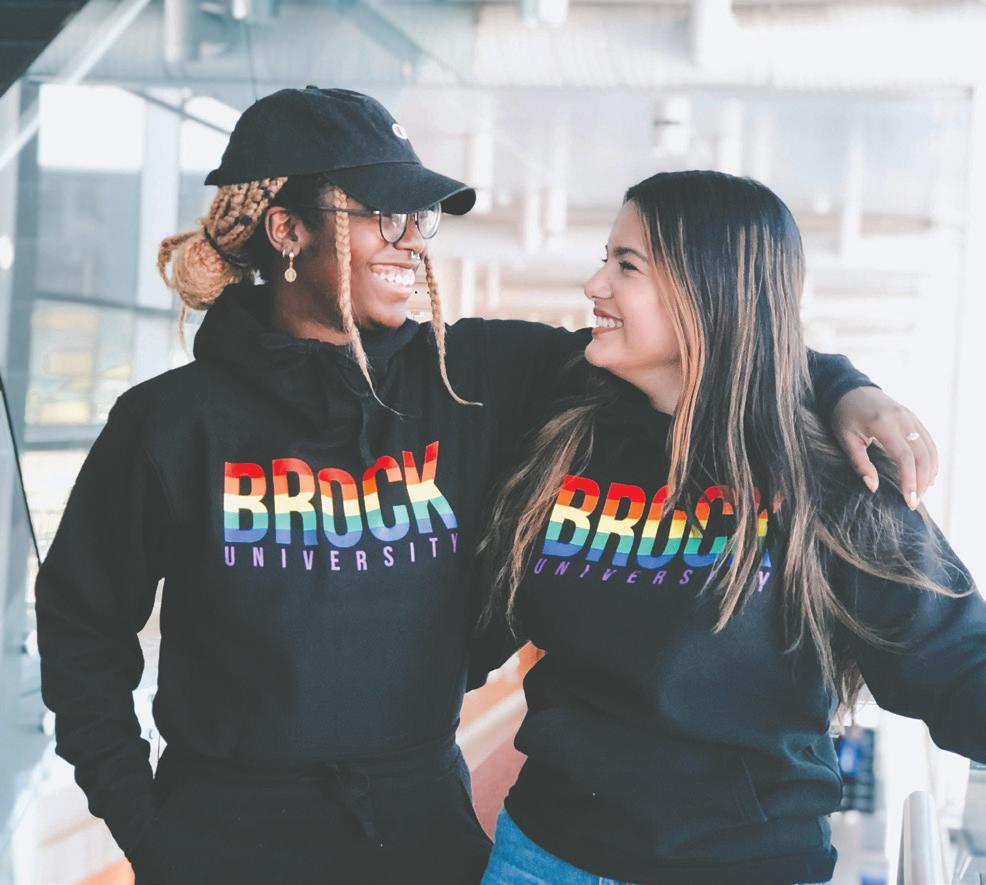
Ken Chan, Vice President of Administration at Brock University, said the month-long slate of activities is a testament to the type of community Brock aspires to be.
“Celebrating Pride Month is one way we embrace Brock's commitment to an inclusive environment where everyone can learn, work, and live in a community that respects people of all identities,” says Chan. “The various events during Pride Month are a fabulous reminder to work proudly together for inclusion and representation throughout the year.”
Q&A WITH
Omar Ahmed
1. Can you tell us about yourself and your social media journey?
I was born and raised in the U.K. and have spent the last seven years living in Australia, Germany, and, most recently, Canada. I grew up not really seeing much queer or South Asian representation in any form of media, so documenting my life on the internet has always been a love letter to my younger self. I started my social media journey by documenting my travels, sharing my photography, and showcasing queer joy! It slowly began to take off when I started exploring my gender identity, and in a way, it helped me discover this version of myself that I had repressed for such a long time. Realizing that I’m non-binary, sharing this aspect of my life, and connecting with others like me has been possible from the power of social media, and I thinkthat’s beautiful.
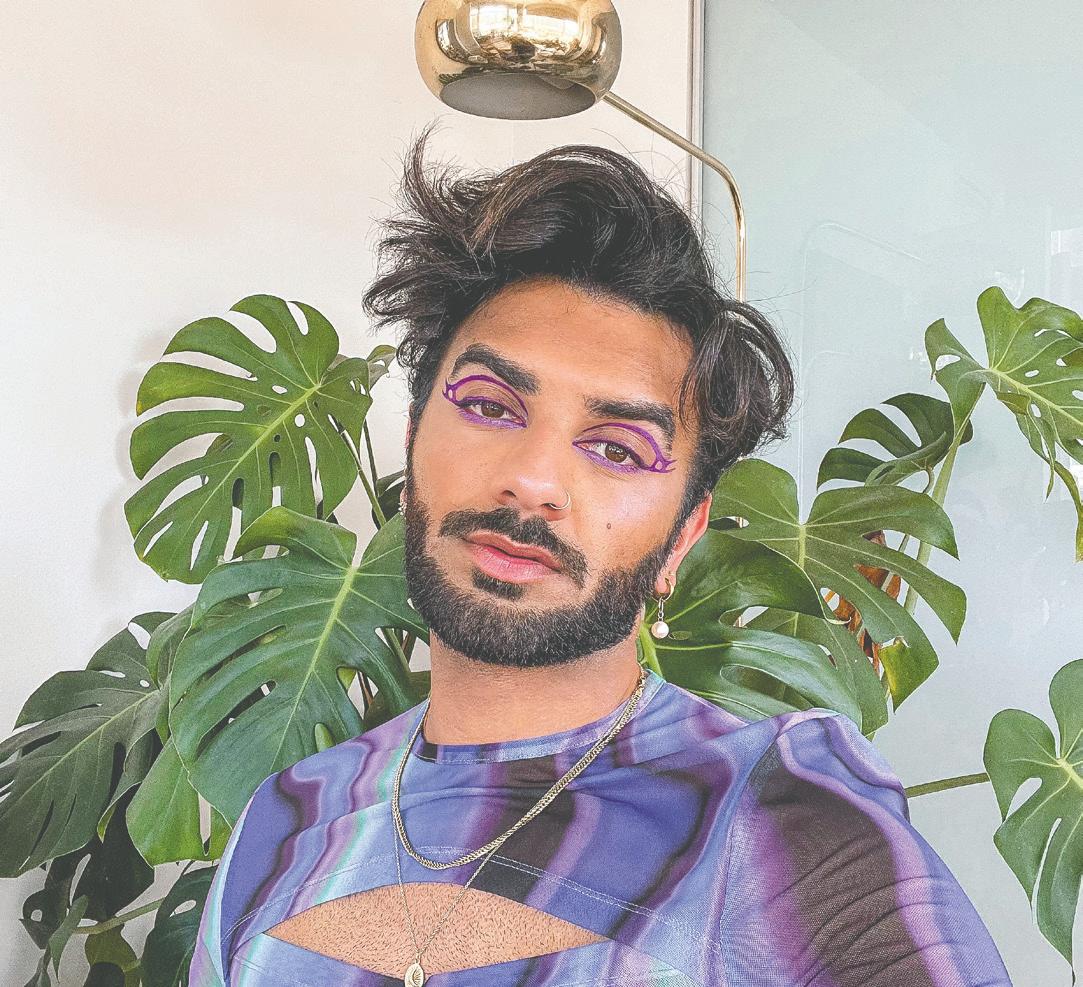
2. What do you hope viewers take away from your content?
Creating content with Matt has been so much fun for many reasons, but the main one is that we get to showcase a healthy queer relationship online and hopefully inspire and connect with others.
I hope that people watching our content who grew up in strict religious households — like Matt and I — realize that being open and authentically yourself, with a life full of love and happiness, is for everyone — no matter what you look like or where you’re from.
3. What advice would you give someone struggling to share their authentic self? Try not to put too much pressure on yourself or focus on labels and what other people think of you. There’s no timeline except your own. You get to choose your own path, who you share your true self with, and when you want to do that. So go at your own pace, and things will fall into place.
The YMCA: A Place Where Everyone Can Shine
During Pride Month, the YMCA proudly celebrates the 2SLGBTQIA+ communities and every shining colour of the rainbow. For those striving for the acceptance that so many take for granted, the YMCA stands with you and is committed to making sure you find a sense of belonging at the Y and outside its walls.
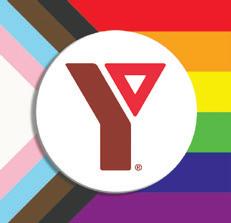

As one of Canada’s largest charities serving more than 2 million people annually through its programs and services, the Y wants to make sure everyone has a chance to shine. Inclusion is one of our core values, and we work hard to make sure you experience it in all our programs.
Across Canada, many YMCAs have programs designed to meet specific needs identified by 2SLGBTQIA+ communities, such as inclusive camp programs or programs for 2SLGBTQIA+ newcomers.
Breaking down barriers
The YMCA of Greater Toronto is one such Y that has worked tirelessly to create inclusive and diverse spaces. “I’m constantly inspired by how we at the YMCA of Greater Toronto work toward identifying and removing systemic barriers to inclusion, and how our charity is committed to creating a sense of belonging both internally and more broadly, among participants
and community members,” says Curt Pullan, Chair of the Pride Committee at the YMCA of Greater Toronto and a Director of its Youth Substance Abuse Program (YSAP).
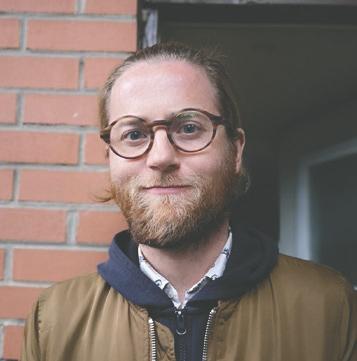
The YMCA of Greater Toronto offers programming supporting and promoting 2SLGBTQIA+ communities during Pride Month. In 2022, the programming includes training sessions on genderism and heterosexism, and a session where educators learn how to best teach children about gender. In addition, the Y is always working toward providing a safe and affirming space for all, like YMCA Sprott House — one of Canada’s first transitional houses for 2SLGBTQIA+ youth.
beyond Canadian borders through a partnership with the YMCA of Peru and TRANS Organización Feminista to implement TRANScendent Opportunities, a project funded by Equitas to sustain the fight for the human rights of trans peoples in Peru.
“Our programming celebrates and realizes the potential in everyone,” says Pullan. “Helping them grow, lead, give back, and shine in their communities.”
About the YMCA
With over 1,500 locations across Canada, the YMCA is a charity that aims to spark potential — fostering growth, leadership, and opportunities to give back to communities. The YMCA provides various programs and services geared toward helping individuals at any stage of their life. Truly, there is something for everyone at the YMCA.
Visit ymca.ca /2slgbtqiainclusion to learn more.
The YMCA Sprott House is just one of the youth shelters and outreach programs at the YMCA of Greater Toronto. The charity has even made an impact
Best known for its health, fitness, and swimming programs, the YMCA is Canada’s largest provider of not-forprofit child care. In addition, the Y offers many programs for children and youth through YMCA camp and youth engagement programs. The charity also provides programming that helps job seekers connect to the labour market, assists newcomers in settling into Canada, and many other community initiatives that address issues identified in local areas.
Visit ymcagta.org /ways-to-give if you are interested in donating to the programs and services offered at the YMCA of Greater Toronto.
Brock University — a place where everyone can learn, work, and live with respect.
Find out why Brock’s student experience is ranked among the best in the country. Visit brocku.ca to learn more.
Follow Omar's journey on TikTok @matt_and_omar
Brock University
A SPECIAL INTEREST SECTION BY MEDIAPLANET Read more at truenorthliving.ca | 5
Celebrating Pride Month is one way we embrace Brock’s commitment to an inclusive environment where everyone can learn, work, and live in a community that respects people of all identities.
The YMCA has been a community pillar for over 170 years, providing equitable and top-quality programming to all who walk through its doors.
This article was sponsored by the YMCA
Katherine Cappellacci
Curt Pullan Chair, Pride Committee, The YMCA of Greater Toronto
Inclusion is one of our core values, and we work hard to make sure you experience it in all our programs.
This article was sponsored by Brock University
Renewing Our Commitment to a Better Future
Empowerment is a strong word, and its definition impacts members of the 2SLGBTQIA+ communities differently. Many of us, who self-identify as queer or trans people, have been seeking to move away from years of oppression, low self-esteem, and impostor syndrome. But unfortunately, decades of community engagement, advocacy, and commitment haven’t been enough to ensure the recognition of similar rights as other identities have always had.
We cannot deny that the queer movements and some advancements to protect civil rights have given us stronger and more confident voices. However, it’s still hard to feel heard. Despite all the collective efforts, it seems that only a few of us are allowed to speak and share fractions of what’s essential for our communities.
We notice that only a portion of the queer and trans communities is represented in media, such as advertisements, movies, the music industry, and television. But, paying closer attention to detail, we also notice the same approach for profi les inside business organizations and leadership roles, following pre-established rules of who is allowed to get there — sort of like a golden ticket.
Although one of the most common organizational campaigns to promote DEI in the workplace is to live our authentic selves, it seems that we must keep adjusting to fit into those places designed for us. All the while continuing to hide our identities to occupy the spaces like anybody else.
But we aren’t just anybody else. Our power comes from lived experiences and challenges of being marginalized since childhood — trying to survive no matter what. We’ve learned to live with
adversities and fi nd support in each other, as many of us haven’t had the support from our immediate families.
cess, most of us are underemployed or forced to work in degrading conditions to survive. Research projects show data related to employment differences by gender identities and sexual orientation. The reality goes beyond wage gaps and employment because even basic access to health systems or housing rights is more complex for queer and trans people.
When we talk about empowering queer people, we’ve to recognize all the oppressive backgrounds and that the power should come from different sources. We’ve been conquering and advancing our rights since before the Stonewall riots in June 1969. The Pride celebrations are the recognition of some of our victories and a message that we won’t go back to oppressive rules and legislation.
We’ve learned how to build our communities to be more resilient, which doesn’t mean accepting peanuts and empty words. Queer and trans people are engaged to do more for our future, for the opportunities to recognize our talents and professionalism, and for changing the current realities.
So far, the advances aren’t enough, as several of us live under systemic oppression and face its barriers. As only a tiny portion of the 2SLGBTQIA+ community attains professional suc-
Regardless of what’s happening in some places where conservative policymakers are targeting our communities, we won’t surrender and give up our rights to living in freedom. Pride isn’t just a day or a month full of celebrations — it’s the renewal of the public commitment of queer and trans communities to say that we’re empowered to demand and work for the recognition of our rights and a better future. The process has already begun, and we celebrate Pride all year long.
Business owners, entrepreneurs, and individuals who never imagined they would be sitting across the table from a PepsiCo, Johnson & Johnson, or Bell Canada buyer, now see doors open up to a new world of opportunity through Supplier Diversity initiatives.
Traditionally, hiding your LGBTQ2+ status has been recommended in the workplace. A study commissioned by Canada’s LGBT+ Chamber of Commerce (CGLCC) and conducted by Deloitte LLP surveyed LGBTQ2+- owned, operated, and controlled companies across Canada in 2021. This study found that approximately 33 to 39 percent of LGBTQ2+-owned businesses had been harassed, had lost revenue, faced discrimination, or intentionally hid their company’s LGBTQ2+ ownership.
Over 40 percent of businesses surveyed ultimately said there was value in publicly promoting their LGBTQ2+ ownership. One of those values was the opportunity to join a community of diverse suppliers to network and gain access to corporate procurement opportunities through a Supplier Diversity Certification program.

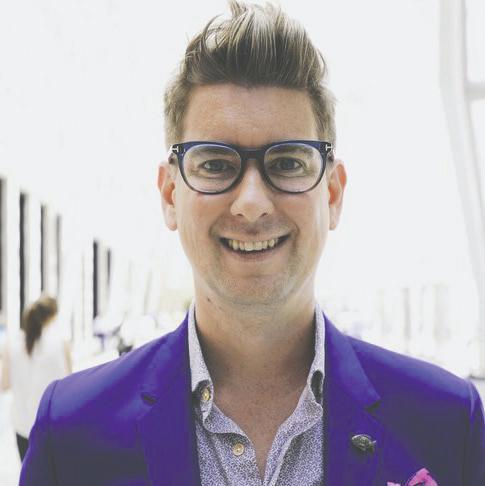
“Supplier Diversity means providing opportunities for individuals and companies that might have difficulty getting in the room or getting access to certain networks,” says Gavin Arm-
strong, President and CEO at Lucky Iron Fish Enterprise, a CGLCC-certified supplier. “We know that marginalized communities are sometimes left out of those important opportunities. For me, it’s important to come together as a network to help each other, provide resources and access, and to help us thrive and succeed.”
Not your traditional Chamber of Commerce
The Canadian LGBT+ Chamber (CGLCC) does things quite differently from a traditional Chamber of Commerce.
“When I started Lucky Iron Fish as a gay entrepreneur, I felt very isolated and alone, and I didn’t feel like
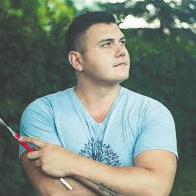
I belonged in the support programs that existed for other entrepreneurs,” says Armstrong. “The CGLCC brings together individuals who have a shared experience, shared identity, and shared community. It provides resources, support programs, and access to different networks to help organizations meet their full potential.”
Small and medium enterprises are the backbone of the Canadian economy. The Deloitte survey also found that LGBTQ2+ entrepreneurs are unique in that they are more likely to be self-employed, younger, serving more domestic markets, and employing and working with other diverse-owned businesses.
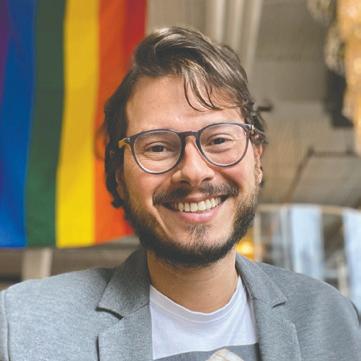
“In the beginning, I didn’t put it out there. I didn’t originally think it mattered,” says Patrick Hunter, an artist currently skyrocketing to success after fully embracing his Indigenous and Two-Spirit identity within his work and professional networks. “It wasn’t until I infused who I was and where I came from into the work that it really started to take off. The more authenticity you have, the more it resonates with people.
Certified Suppliers see immediate results in expanding their networks, business acumen, and professional connections with those who will help their business thrive. However, the real benefits lie in a longer-term investment in the community.
6 | Read more at truenorthliving.ca A SPECIAL INTEREST SECTION BY MEDIAPLANET
How CGLCC Is Helping Businesses Maximize Their Potential Through Diversity
you would
Explore PaWC resources, training & programs at prideatwork.ca if you need support to improve your 2SLGBTQIA+ inclusion journey. If
like to see more value in your business or workplace, visit cglcc.ca to find out more about the CGLCC.
Luis Augusto Nobre, Communications Coordinator at Pride at Work Canada
Luis Augusto Nobre Communications Coordinator, Pride at Work Canada
Gavin Armstrong President & CEO, Lucky Iron Fish Enterprise
The Pride celebrations are the recognition of some of our victories and a message that we won’t go back to oppressive rules and legislation.
The CGLCC provides resources, support programs, and access to different networks to help organizations meet their full potential.
For me, it’s important to come together as a network to help each other, provide resources and access, and to help us thrive and succeed.
Patrick Hunter Artist




































